Abstract
This study compared the effectiveness of a videotape training program with other methods of teaching children self-protection to prevent child abduction. Subjects were kindergarten and first-grade students. Four experimental conditions were presented: videotape with behavior rehearsal, videotape only, a standard safety program, and no training. Acquisition of self-protective behaviors was measured at posttraining and follow-up by having confederate adults entice the children near their schools and homes. Results revealed that the videotape program with behavior rehearsal was highly effective in teaching children safe responses to potential abductors. The standard safety program was effective with fewer than half of the children. Three fourths of the children who received no training immediately agreed to go with the confederate suspects. The videotape program can be easily used with groups of young children in a classroom setting.
Full text
PDF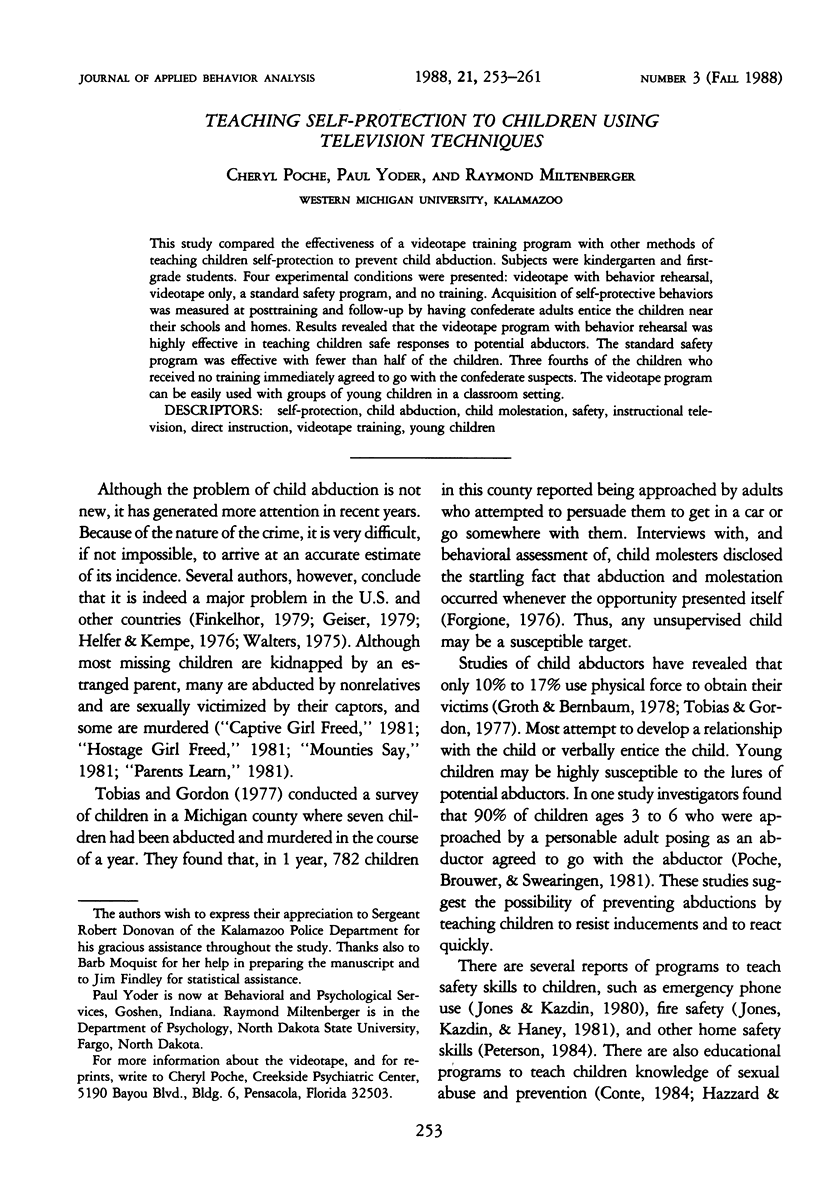
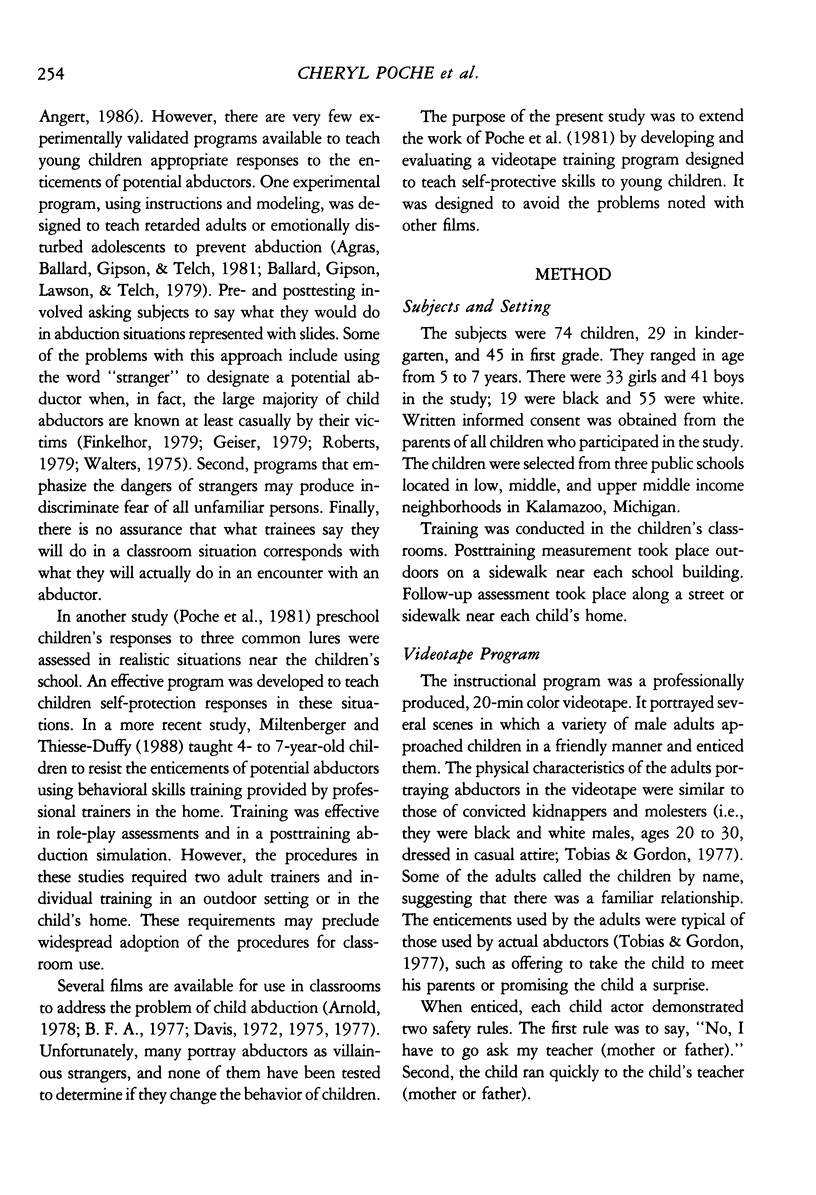
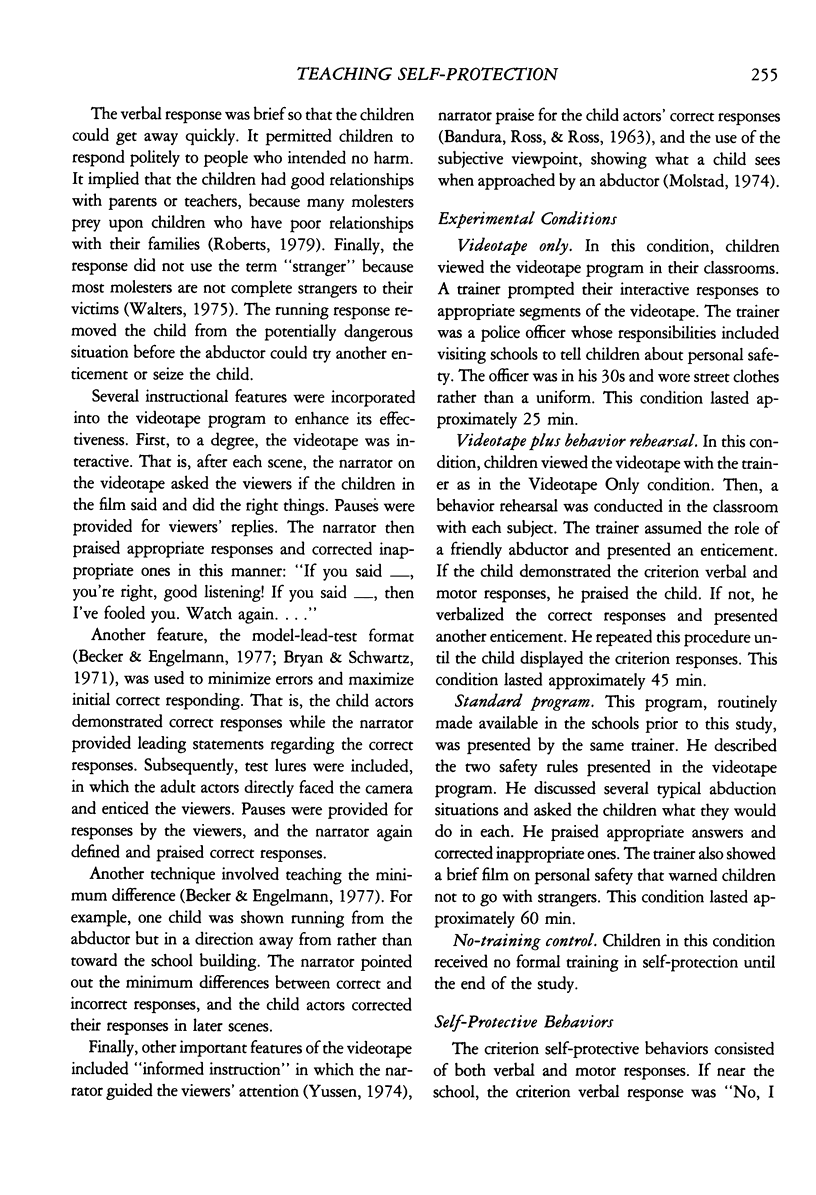
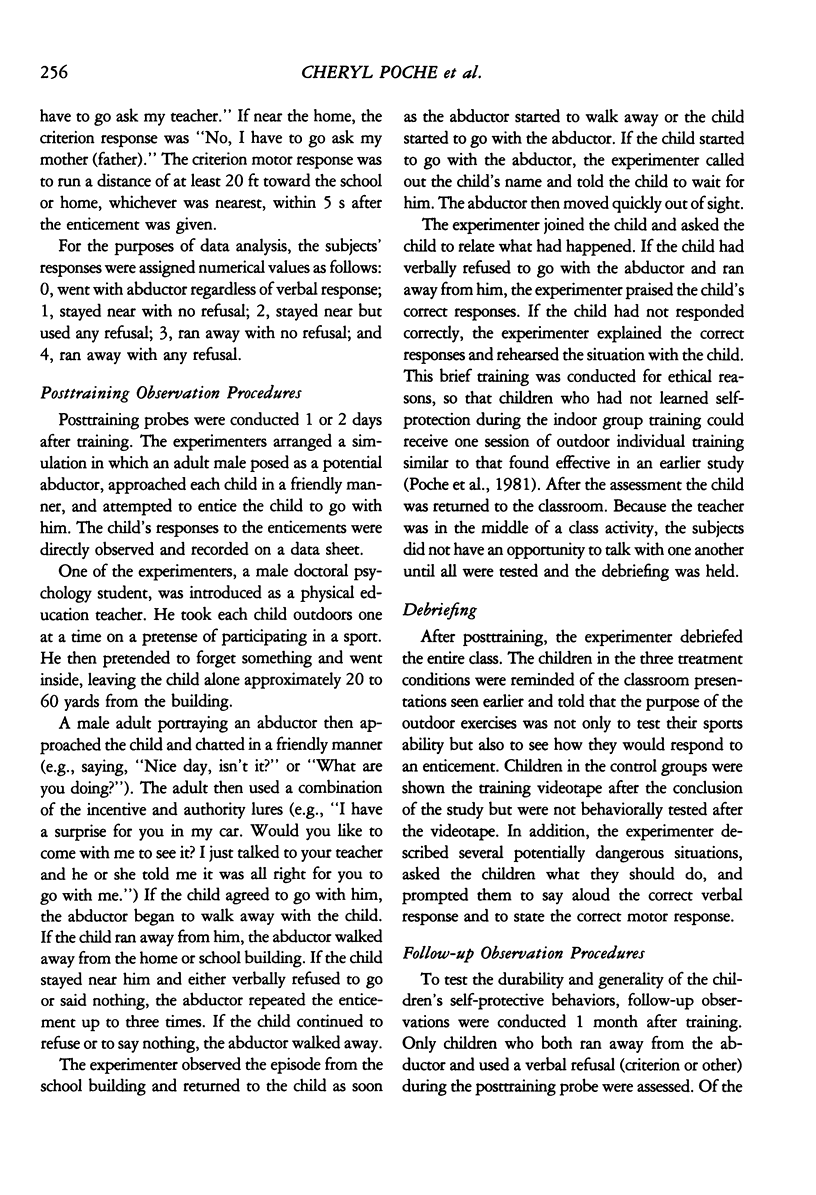
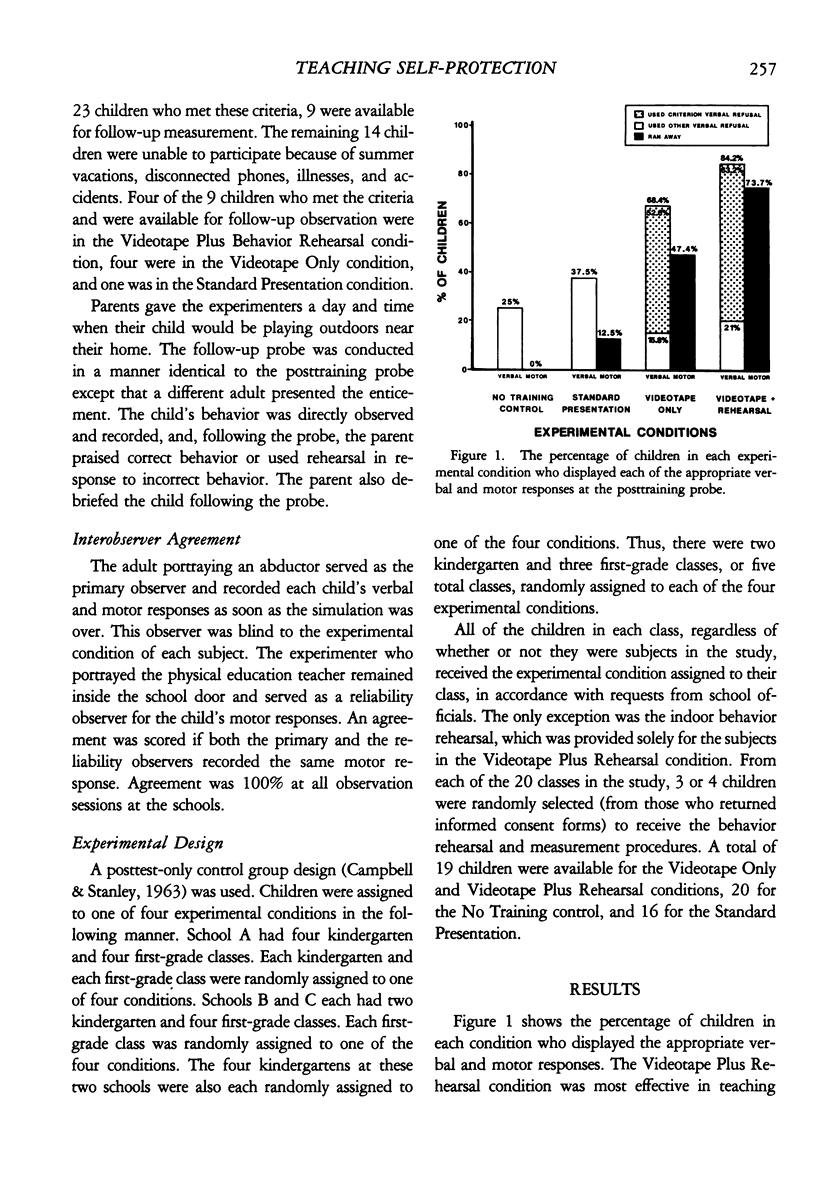
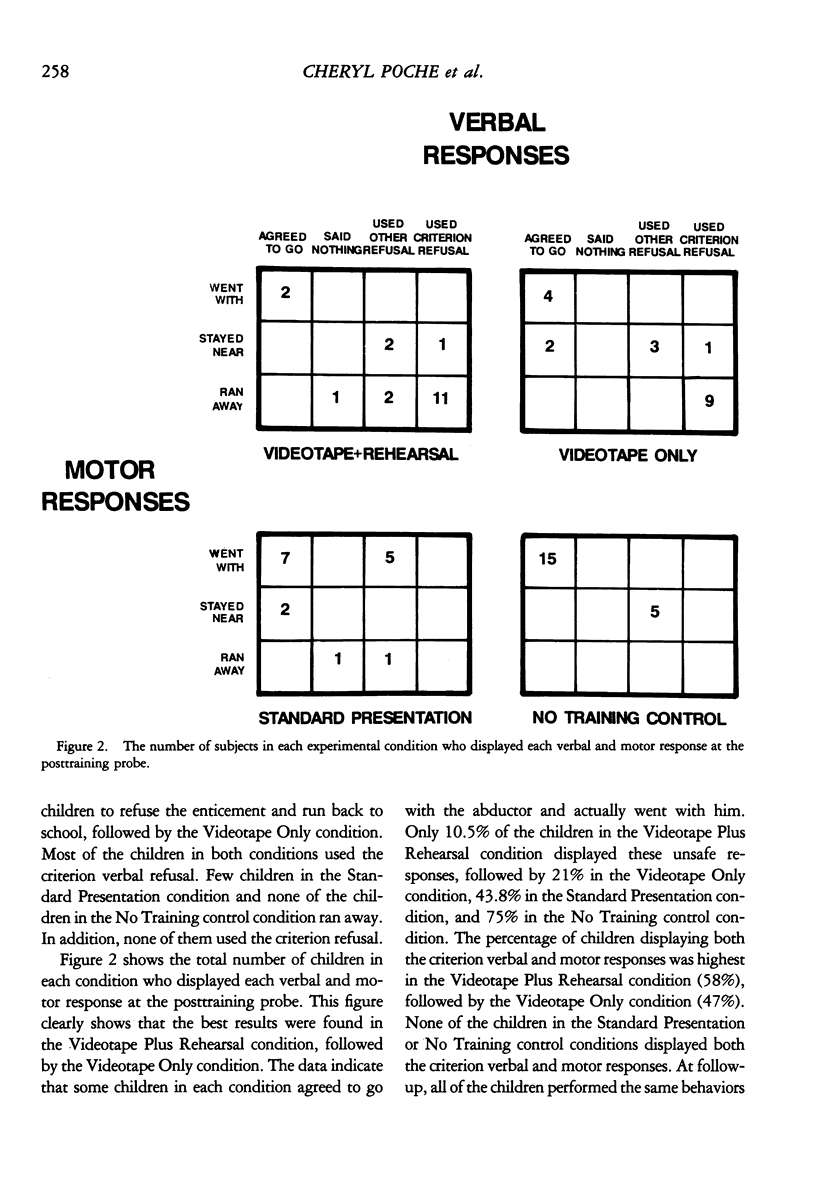

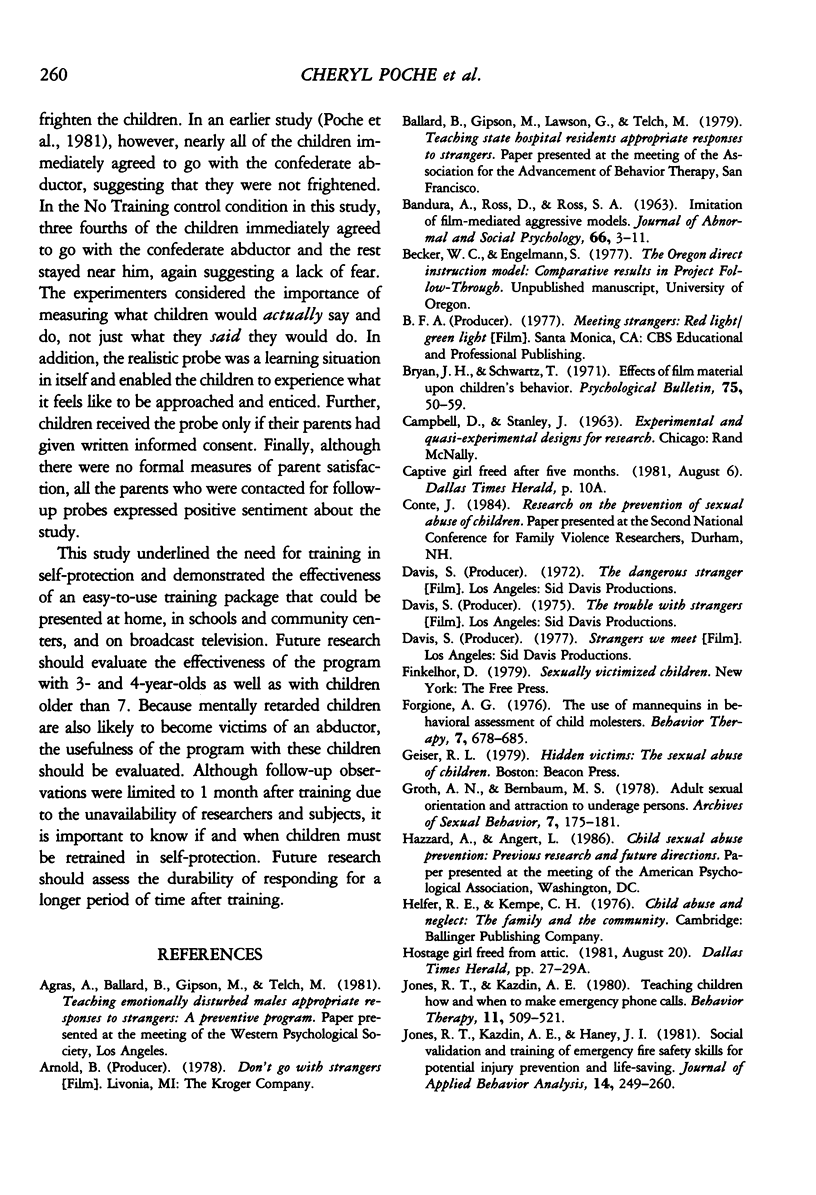
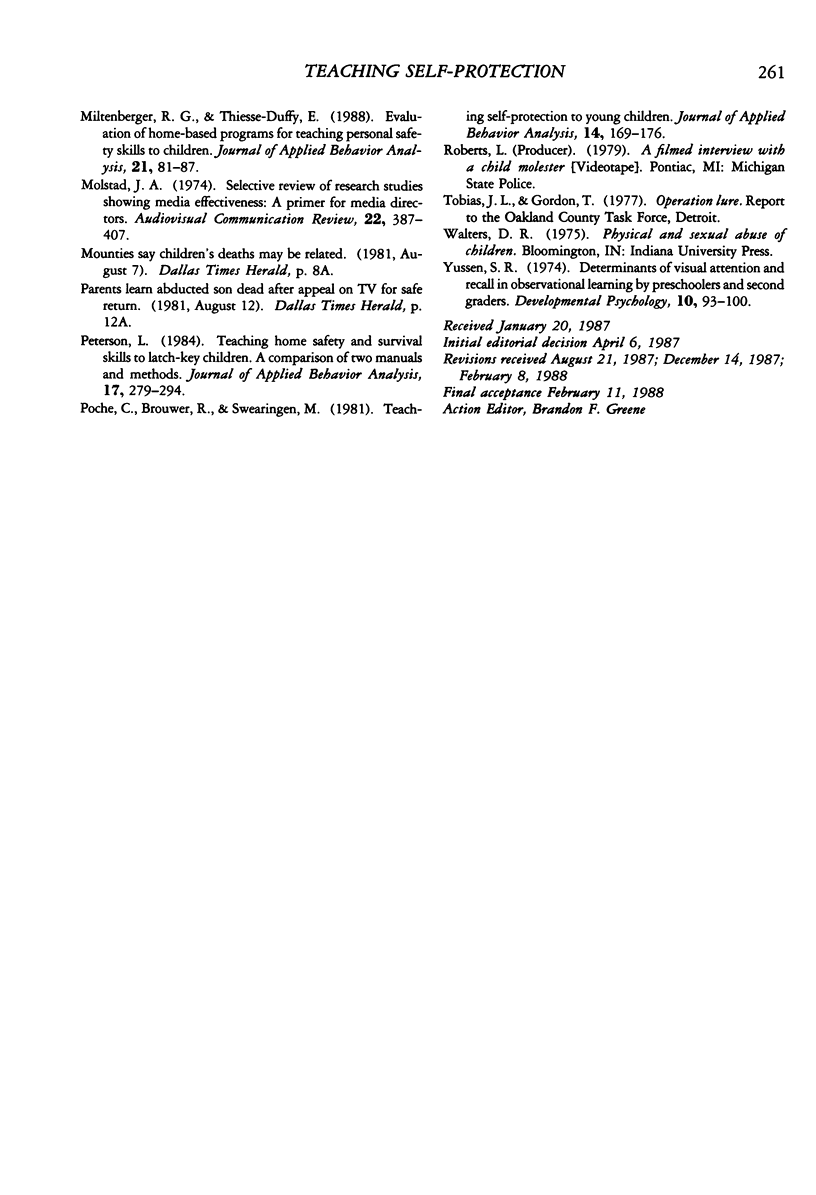
Selected References
These references are in PubMed. This may not be the complete list of references from this article.
- BANDURA A., ROSS D., ROSS S. A. Imitation of film-mediated agressive models. J Abnorm Soc Psychol. 1963 Jan;66:3–11. doi: 10.1037/h0048687. [DOI] [PubMed] [Google Scholar]
- Bryan J. H., Schwartz T. Effects of film material upon children's behavior. Psychol Bull. 1971 Jan;75(1):50–59. doi: 10.1037/h0030359. [DOI] [PubMed] [Google Scholar]
- Groth A. N., Birnbaum H. J. Adult sexual orientation and attraction to underage persons. Arch Sex Behav. 1978 May;7(3):175–181. doi: 10.1007/BF01542377. [DOI] [PubMed] [Google Scholar]
- Jones R. T., Kazdin A. E., Haney J. I. Social validation and training of emergency fire safety skills for potential injury prevention and life saving. J Appl Behav Anal. 1981 Fall;14(3):249–260. doi: 10.1901/jaba.1981.14-249. [DOI] [PMC free article] [PubMed] [Google Scholar]
- Miltenberger R. G., Thiesse-Duffy E. Evaluation of home-based programs for teaching personal safety skills to children. J Appl Behav Anal. 1988 Spring;21(1):81–87. doi: 10.1901/jaba.1988.21-81. [DOI] [PMC free article] [PubMed] [Google Scholar]
- Peterson L. Teaching home safety and survival skills to latch-key children: a comparison of two manuals and methods. J Appl Behav Anal. 1984 Fall;17(3):279–293. doi: 10.1901/jaba.1984.17-279. [DOI] [PMC free article] [PubMed] [Google Scholar]
- Poche C., Brouwer R., Swearingen M. Teaching self-protection to young children. J Appl Behav Anal. 1981 Summer;14(2):169–175. doi: 10.1901/jaba.1981.14-169. [DOI] [PMC free article] [PubMed] [Google Scholar]


